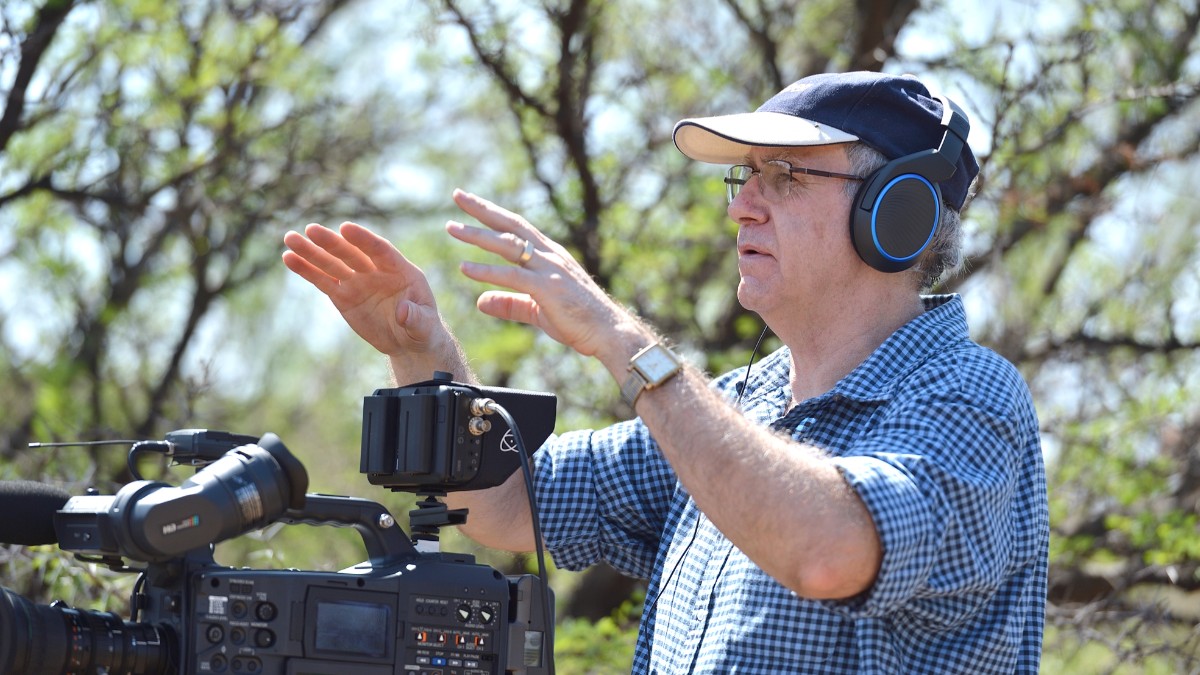
Narrative | Dramatic Features
Film Name: Die Pelsloper (Afrikaans) – The Skin Walker (English)
Genre: Romantic Horror/ Thriller
Date: The final scenes were completed in December 2018 Jan 2019
Director: Martyn le Roux
Producer: Martyn Le Roux
Writer: Martyn Le Roux
Cinematographer: Martyn Le Roux
Production Company: Paragon Cinematic Media
Budget: No-budget movie roughly at R250000 ($20 000 USD)
Financing: Self-financed; own back pocket, family, friends- done on a teacher’s salary
Shooting Format: 1080p in 10-Bit AVC-Intra 50/100p (28Mbps/VBR), (1920 x 1080/50p)
Screening Format: 1080Hd
World Premiere: Global Nonviolent Film Festival
Awards: 2+
– Best Opera Prima at the Global Nonviolent Film Festival
– Best Actress for Chantelle Werth at the Global Nonviolent Film Festival
Website
indieactivity: Tell us about “who you are”?
Martyn le Roux (MR): Martyn le Roux (60) hails from Paarl, a small village near Cape Town, South Africa, where he teaches High School. He is a Playwright and Radio Dramatist who has written numerous radio plays for the biggest local Afrikaans broadcaster in South Africa, RSG (Radio without Borders), and his work has been awarded and nominated numerous times with the highest media awards in South Africa namely the ATKV Media Feather Awards and others. His work has also produced a number of media award winners like Best Actor, Best Actress, and Best Director. He studied Drama and Theatre Arts at the University of the Orange Freestate and he has been involved in many stage productions since the 80s both as actor, producer, and director.
It has always been one of my dreams to someday produce my own film and I wrote my first film script at age seventeen while still in high school. It took me forty years to finally do the deed.
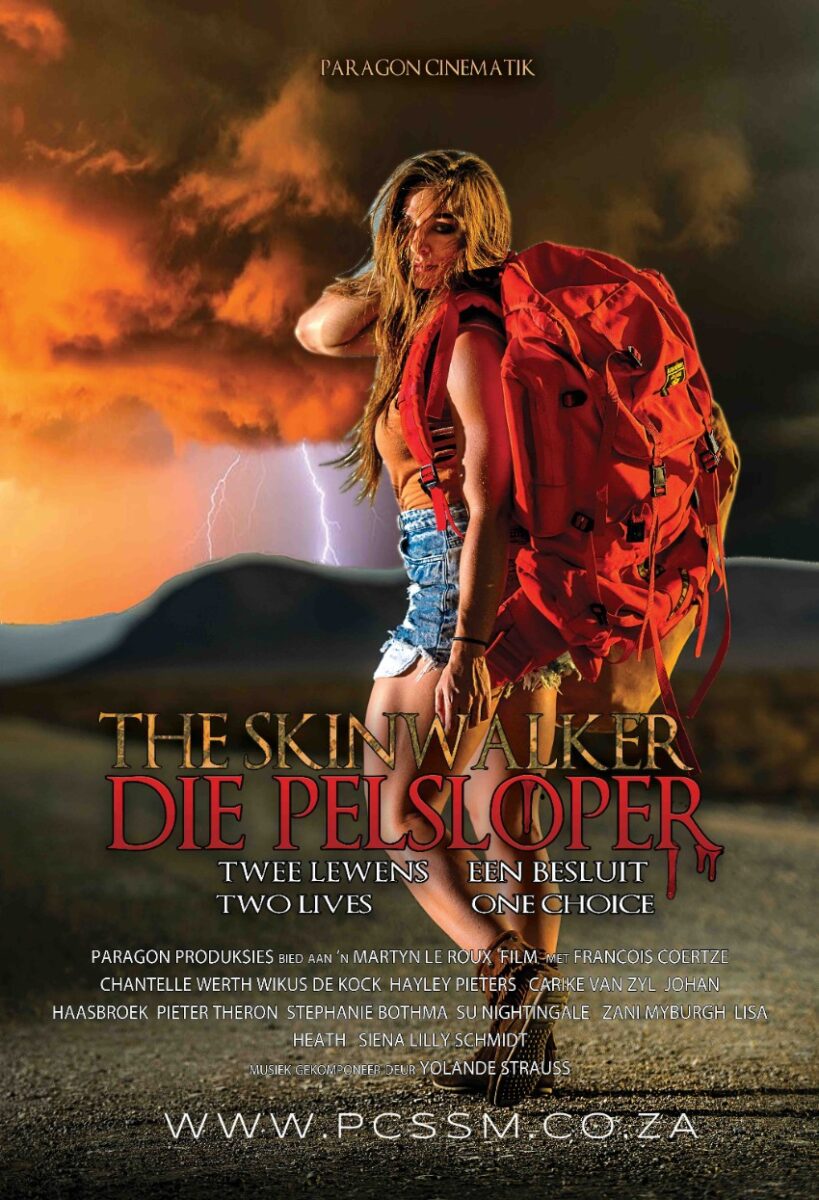
Introduce your film?
Martyn le Roux (MR): Pelsloper (“Skin Walker”) originally started out as a 350-page electronic book that I wrote some years before. At that stage, I had no idea or inkling that it shall be turned into a 4-Hour Series of film. I have always been fascinated by the legend of the Werewolf, for it is the one myth that always seems to have something of a human tragedy connected to it. A human that can turn into a monster at the full moon. A curse that you have no control over. And although it might seem like something that would be “cool” to do, it is a terrible debilitating curse for the poor inflicted person. (much like Victor Frankenstein’s creature?) I wanted to show the tragic side of the Werewolf, the other side of the moon, so to speak, that side that we never realize exists.
And thus was born the idea of Samantha and her lonely existence deep in the Tankwa Karoo where she’s devoid of love and friendship and doomed to a lonely existence far away from people and even if she finds love, that love will be the only thing that can set her free from a terrible life. The Title DIE PELSLOPER is also a pun on the word “Pels” (fur or skin in English) pointing to both the fact that she sells and trades in furs for a living, and is a were-creature that carries the wolf beneath her skin.
Tell us why you chose to write, produce, direct, shoot, cut/edit the movie? Was it financial, chance, or no-budget reason?
MR: THE SKINWALKER was neither a financial or a no-budget reason, in fact, I had zero budget and no idea of making a film at all! There was no way I could afford to make a film on a meager teacher’s salary in South Africa. DIE PELSLOPER was offered to RSG Radio Station for production as a Radio Play.
A contract was signed, but then they decided they won’t produce it anymore and it was rejected. I was in Johannesburg in May 2017 for the Media Awards ceremony where one of my other radio plays was nominated for 4 awards. We were awarded three of the awards and that night as I lay in bed all excited and hyped up about the awards. I drifted off to sleep and woke up at three in the morning and there it was! I woke up with this clear conviction and idea to turn DIE PELSLOPER into a film.
Call it an epiphany, but I think that was what it was. I woke my wife and told her I have to do this thing. I had no idea where to start, where to get the money or actors, didn’t even have a camera! It scared the pants off me, but I still had this thing inside me like Samantha’s curse, it had to happen. When we got back home I took the radio play and the book I wrote and started turning the story into a film script. I took the first step and the rest just happened miraculously.
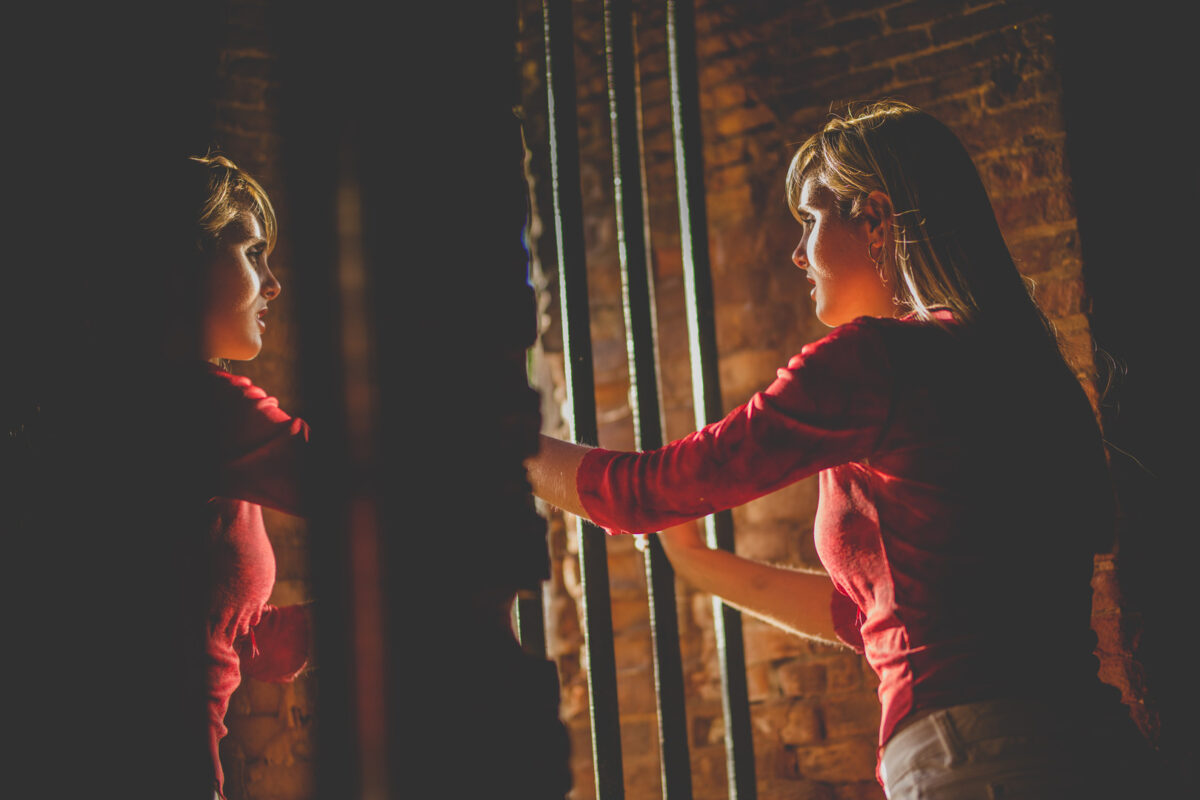
Introduce your crew?
MR: There was no crew. You could not call it that. I trained one of my female acquaintances to handle the boom mic. When she was not available, one of the actors took over the job as a boom operator. My daughter, Adriëtte, who is very artistically inclined, made the dreamcatchers and helped with the decorating of the set. My other daughter Mariechen and André Vermeulen, the owners of the magical SADAWA GAME RESERVE (https://www.sadawa.co.za/accommodation ) in the magical Tankwa Karoo assisted and offered us a space that could be used for Samantha’s home. They also supplied furniture, accommodated the actors, and fed us while we shot the film there. Ninety percent of the film was shot on location at Sadawa and we are enormously grateful for all they did and provided during our two years of using their reserve for filming. It was an unforgettable experience and a magical place to film.
The other locations we beg borrowed and stole from numerous places, people, and friends who allowed us to use their homes and places of interest for filming.
I have done and taught photography for a long time professionally but had to learn how to operate a film camera. The filming, lighting, editing, all of it were done by me.
We hired a local Special Effects company, who did us out of R30 000 for a mechanical wolf’s head that never properly worked or could be used in the final film – a major financial setback! In the end, I produced the special effects needed on my own in post-production using DAZ 3D and Adobe After Effects.
I have to make special mention of the music for the film. The theme and most of the ambient music were composed and produced for us by a very talented Yolandé Strauss from Centurion who wrote the hauntingly beautiful music score for the film at no cost to us at all. She is an amazing talent and one that deserves a lot more exposure.
What are your personal experiences putting on all these hats/responsibilities (simultaneously)? Tell us about the story, writing, and production?
MR: Being a One Man Band, was not the easiest thing I’ve ever done in my life. I had to learn as I went along. Juggling everything at once was not the ideal way of doing things, but we just could not afford a crew. The film was shot over a two-year period, during public and school holidays and weekends, on and off. So keeping track of scenes, props, clothing and other continuity was a power trick on its own! We took pictures, made notes, anything to keep it together and everybody assisted. My actors, especially Francois Coertze, the only professional actor in the film, was a great help and wonderful to work with. They mostly organized their own costumes and personal props during the shooting and I had to do minimal planning. Sometimes one shoot and the next would be months apart.
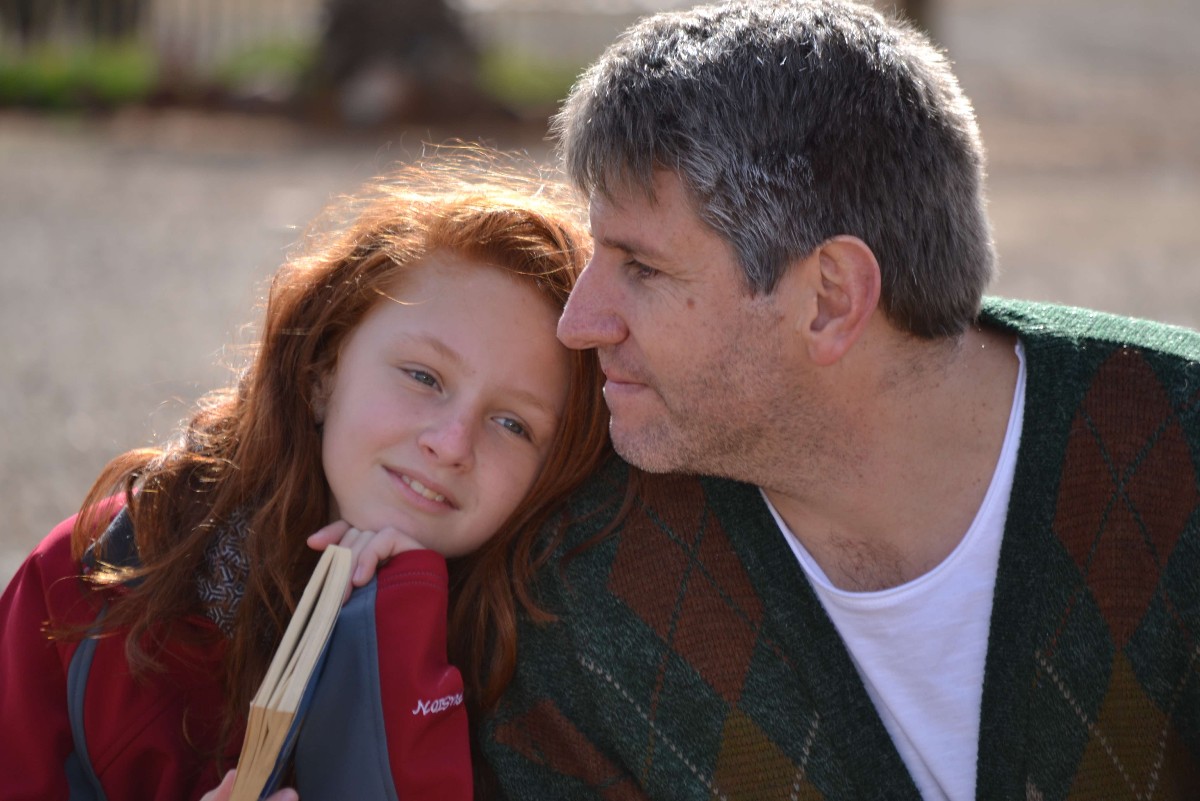
On the one hand, this helped the main actors to get their dialogue down to pat, but it was hell on wheels to keep it all together. People’s loyalties and enthusiasm started to wane a bit. We had special problems with the role of Samantha in this regard and had to cast that particular role four times before we finally had somebody who could play the role. On the positive side, doing everything, and having written the story, I knew exactly what I wanted and how I wanted things done and organized. Having total control was actually very liberating and I don’t think if I left it to an outsider it would have been what I envisage from the start
What is the source of the idea? How did the story develop from the idea? And how did the story evolve into a screenplay? Why do this story? Do you have a writing process?
MR: As I’ve explained above, it started as a novel which I turned into a radio play and then into a film script. I didn’t want to cut the story to bits but wanted to film and show the story as it was written, thus it was aimed to be a two-part mini-series of two hours each. I also did not aim for it to go to the big screen but aimed at the online streaming market from the start. Plus, the camera that I could afford at that stage was not 4k or better resolution that could be used for the big screen. We were stuck at 1K or HQ 1080. The story was meant to be a bit of romantic Gothic horror. It would show the life of a werewolf from a different angle, and won’t follow the typical werewolf films that are out there. In fact, in the original story, Samantha was not a werewolf (as we don’t have wolves as such in South Africa) but she was a were-leopard. In Xhosa and Zulu culture the belief in humans that can turn into were-lions or tigers is real. In the full four hours’ version, Samantha is thus portrayed as a Werecat or therianthropes that transform into a tiger or leopard. In the shorter film version, I wrote and turned her back into a lycanthrope. SKINWALKER surely was not the best choice for a first film, I had shorter, more suitable stories available, but the story of Samantha was just something I had to tell and film.
Let’s talk pre-production: take us through a timeline of how you started and ended it?
MR: When I returned from Johannesburg on a fateful night I had nothing to go on, no money, equipment, crew, or actors. Nada! I had my story (still not a script) and a computer. I started writing the story into a film play. I took out a few adverts on social media and local classifieds for people who would be interested to play in a film and give their time and talents for a small fee. I basically wanted people to play for free. To my amazement, the applications rolled in, and form those I managed to get my cast. The role of Samantha I had to cast over four times, because of various problems. I had teachers, ex-policemen, a private detective, a housewife, a drama student, and a pensioner for actors. Most of them amateurs with little or no acting experience. Only two of my cast were in any way “professionals” Haley Pieters and Franscois Coertze who does freelance work.
I had no equipment. I saw an advert on Gumtree. Somebody wanted to sell a complete production kit. I took money against my house and bought the kit. This was three months later that same year. We started shooting the first scenes that December at Sadawa Game Reserve. For the next year and a half, we went to Sadawa to complete the film in temperatures ranging from + 46 degrees Celsius to minus 3 degrees Celsius in winter. Scenes were sometimes shot like three months apart, but most of us enjoyed the trip out to Sadawa and just getting away from it all for a week or so. Shooting never took more than a week or so at a time.
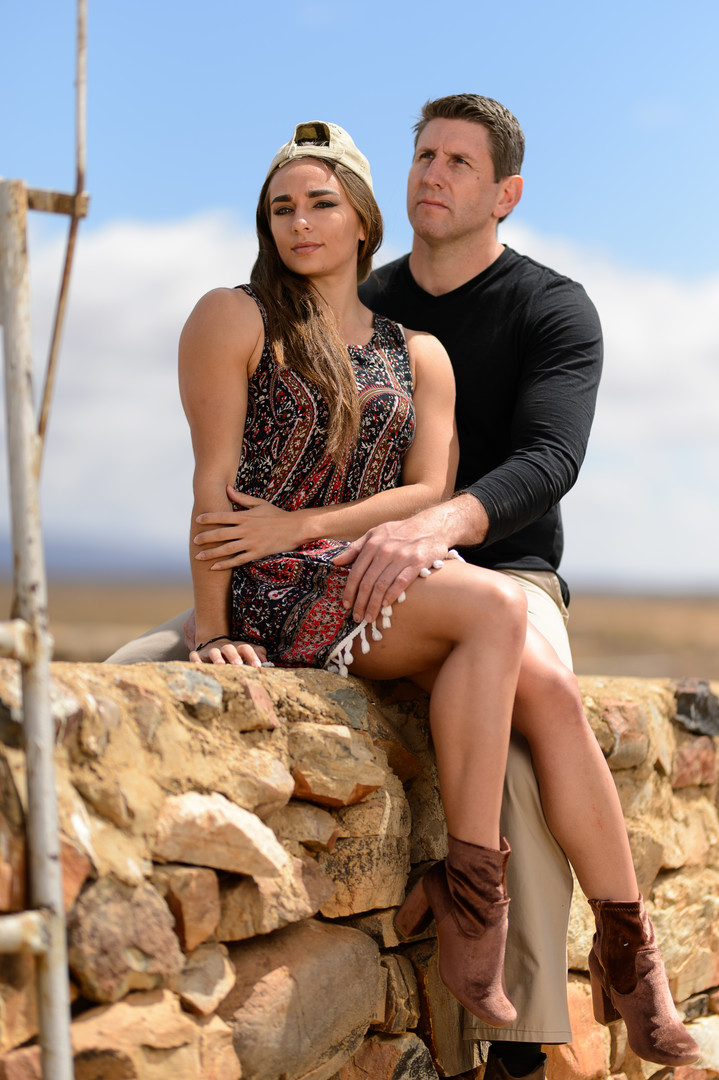
We completed the final scenes in July of the following year (2019) in the middle of winter and under very difficult circumstances because of problems with one of our principal actors. Despite this unpleasantness, I finished the film and started on the editing and post-production which took most of 2019. It was finally done.
What was your rehearsal process and period?
MR: We did not have rehearsals as such. I only had rehearsals with two of the actors who needed help. The lead female role had no experience in acting and I tried to help her as much as I could in the months before we started production and also in-between shooting. I cast her mostly for her looks and made an effort to assist her with her interpretation of Samantha as well as I could. We had enormous difficulties with the role of Samantha, but despite that, it seemed the hours we did put into it have paid off as the film got the BEST ACTRESS award for Chantelle Werth at the Global Nonviolent Film Festival this year.
You shot the film in days. How long were your days?
MR: The film was shot over a period of almost two years. We shot on and off over weekends, public holidays, and school holidays as most everybody who participated was 9 to 5 working people with day jobs. We fitted the shooting in as it suited the actors. All in all, the entire film was probably shot in a total time of three months.
During the shooting at SADAWA, we divided the day into day and night scenes and shot in that time. The other reason for waiting so long between shoots were the seasons. I wanted to capture certain times of the year in the Tankwa. I especially wanted to include the month of September when the whole semi-desert area magically turns into a colorful magic carpet of bright field flowers. But it never happened. I sometimes wish I could re-shoot the entire film again just to get a scene like that into the footage!
Did the tight shooting schedule make it harder or easier? How did it affect performances?
MR: (See Above) Shooting over such a long period definitely affects performances. Not just that, but the real problem comes with attitudes that suddenly change and personal problems that crop up. People’s loyalty and enthusiasm also dwindle.
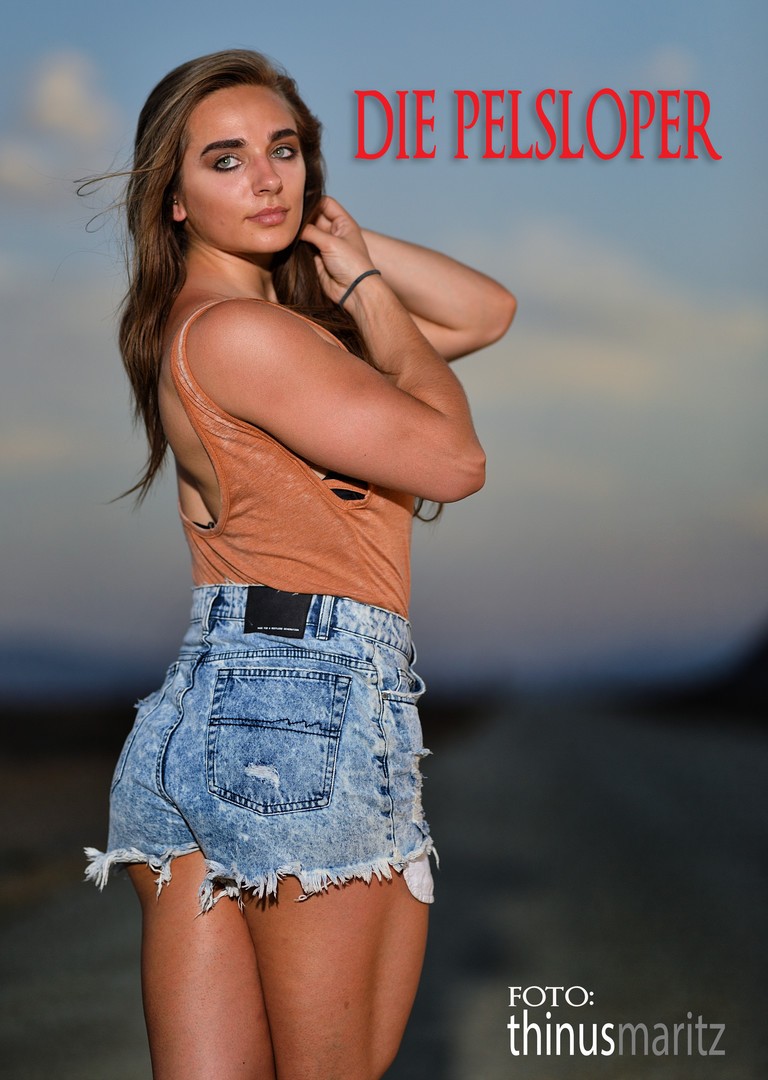
During the film production, what scene (that made the cut) was the hardest to shoot? And why?
MR: I would say the final scene where Samantha drops the bomb on George, asking him to kill her. This is the climax of the film and without a doubt the most emotional scene of the film. It was a nightmare as it was shot in winter and there was horrible little wind that blew the entire time. The actors weren’t on the best of their game anymore, there were personal problems and really bad attitude problems behind the scenes, and I rushed the scene somewhat just to get it overdone with. The result was that I had less footage to work with and that which I had were riddled with mistakes and problems. This was my most important scene and it was a mess and an editing nightmare. There was no time or money to redo the scene again. If I could, at that time I think I would have re-done the entire film from scratch. Luckily, I think I still manage to save the day with the footage we got.
What were the advantages and disadvantages in the way you worked?
MR: I would say the total control you have over everything is a big advantage, but it is an enormous effort and power drain for one person to handle. COLOSSAL!
What was the experience like of working with a small shooting crew?
MR: Working with a small crew was very good. You get to know each other personally well and it becomes a bit of a social thing. I’ve walked away from this experience with a lot of new friends for life…and unfortunately enemies, for reasons unknown and still a mystery to me.
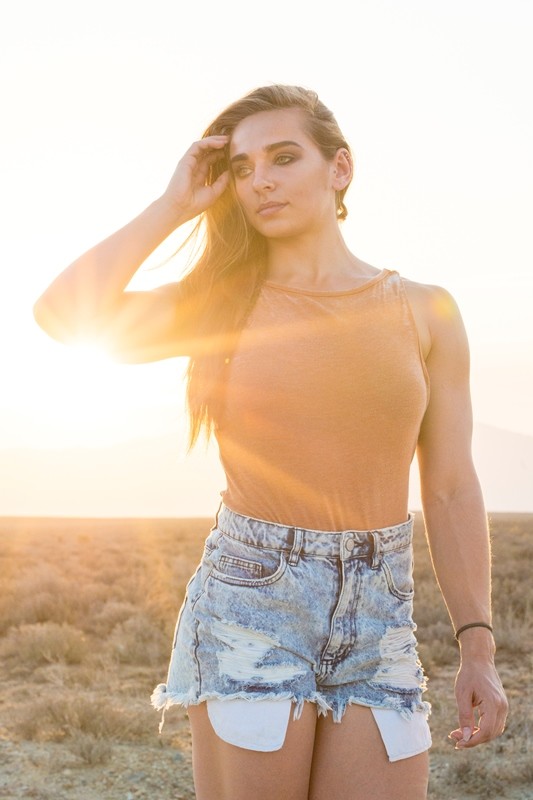
When did you form your production company – and what was the original motivation for its formation?
MR: I formed PARAGON CINEMATIC MEDIA when I embarked on this journey with SKIN WALKER. My idea was to start a company that could give hidden talent out there a chance to explore and open a door for them and myself. A difficult thing to do in South Africa and I guess everywhere in the world.
What was the first project out of the gate?
MR: SKIN WALKER
What about independent filmmaking and the business do you still struggle with?
MR: Oh, that’s easy! Financing!
Where do you think your strengths lie as a filmmaker?
MR: Story telling. I have too many stories to tell.
Let’s talk about finance, How did you finance the film?
MR: I had no financing. I used some of my savings, took a loan against my house, and got a few thousand Rand for a friend and a family member here and there.
How important is marketing? Talk about the festival tour? Do you think a project can make a dent without it nowadays?
MR: Very important. I tried on my own, but with little success. Festivals are all important, I have discovered that. Festivals like Global Nonviolent Film Festival can make a huge difference for Indie films like mine. Huge.
What do you hope audiences will get from the presentation of your film?
MR: SKINWALKER is more than just another film on a werewolf. I think it comes from a different angle altogether and also brings new insight and spin on the whole werewolf myth. Forget what you think you knew about the subject. It is not what you think at all. (I actually never wanted to show the beast at all, I think it makes it even more frightening if you never see the beast but only what it does.) in the end, it is not just another werewolf film, it is about Samantha and her troubles. We all have our beast on the inside, do we not? Whatever it may be. We all try to hide it from the world out there but every now and then it comes out with claws and teeth and does unspeakable damage to those we love, friends, and family.
It’s a Beauty and the Beast story with a different twist…
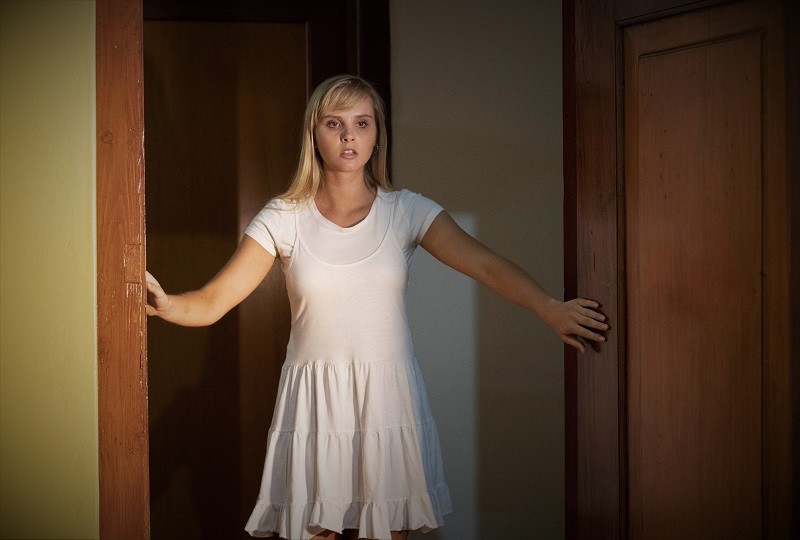
What else have you got in the works?
MR: After the success at the Global Nonviolent Film Festival, I think I have been inspired to do more. If I had the money and the backing I would have loved to actually re-shoot Skin Walker. I’ve learned a lot from this production and would do it very differently. But I have two good stories to still tell. Definitely shorter films(!) which are on my bucket list already. One is a short film about the life of a blind girl entitled On her Blindness and the other a longer hour feature based on another of my radio plays about a girl trying to escape from her horrible family life and circumstances called The Diary of a Worm. Presently I’m producing a 25 episode audio play for the blind (and the general public) called DIE SOUTWATERHEKS (Saltwater Witch)
Tell us what you think of Martyn le Roux. What do you think of it? Genre? More genre? Let’s have your comments below and/or on Facebook or Instagram! Or join me on Twitter.
Follow Martyn le Roux on Social Media
Website
IMDb
Facebook
Twitter
Instagram
MORE STORIES FOR YOU









